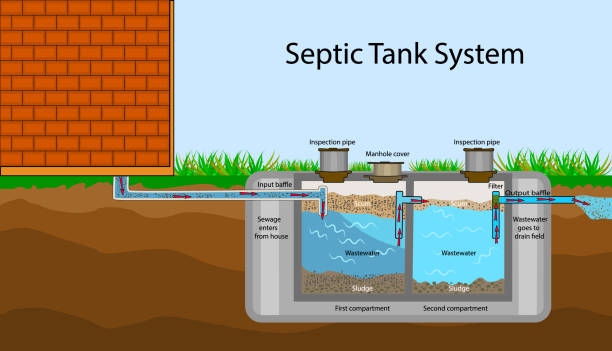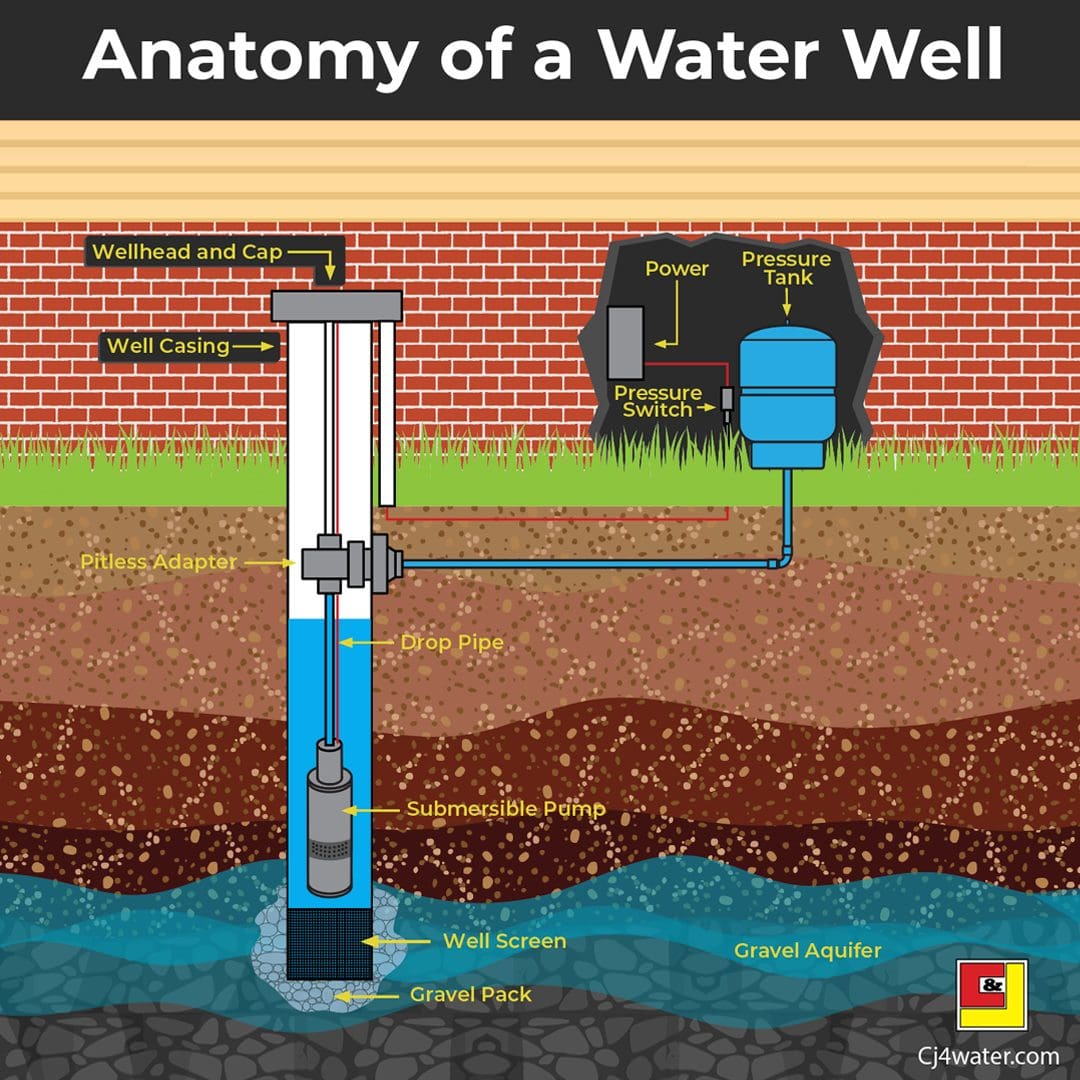Breaking Down Your Home's Plumbing System Anatomy
Breaking Down Your Home's Plumbing System Anatomy
Blog Article
Any individual will have their unique thinking in relation to Plumbing Installation 101: All You Need to Know.

Understanding how your home's pipes system works is crucial for every single homeowner. From supplying clean water for alcohol consumption, food preparation, and showering to safely getting rid of wastewater, a properly maintained pipes system is important for your family's wellness and comfort. In this thorough overview, we'll explore the complex network that makes up your home's pipes and offer suggestions on upkeep, upgrades, and managing typical issues.
Intro
Your home's plumbing system is more than simply a network of pipes; it's an intricate system that ensures you have access to tidy water and reliable wastewater elimination. Knowing its parts and how they interact can help you protect against costly repair services and guarantee every little thing runs efficiently.
Fundamental Elements of a Plumbing System
Pipelines and Tubing
At the heart of your pipes system are the pipelines and tubing that carry water throughout your home. These can be constructed from different materials such as copper, PVC, or PEX, each with its advantages in regards to resilience and cost-effectiveness.
Components: Sinks, Toilets, Showers, and so on.
Fixtures like sinks, toilets, showers, and bath tubs are where water is utilized in your house. Recognizing how these components link to the plumbing system aids in identifying problems and preparing upgrades.
Valves and Shut-off Factors
Valves regulate the flow of water in your plumbing system. Shut-off shutoffs are essential throughout emergencies or when you require to make repair work, permitting you to isolate parts of the system without disrupting water circulation to the entire home.
Water Supply System
Key Water Line
The main water line attaches your home to the community water or a personal well. It's where water enters your home and is dispersed to different components.
Water Meter and Stress Regulator
The water meter actions your water usage, while a stress regulator ensures that water flows at a safe stress throughout your home's plumbing system, protecting against damage to pipelines and fixtures.
Cold Water vs. Warm water Lines
Understanding the difference in between cold water lines, which supply water directly from the major, and hot water lines, which bring warmed water from the water heater, assists in repairing and planning for upgrades.
Water drainage System
Drain Water Lines and Traps
Drain pipelines carry wastewater away from sinks, showers, and bathrooms to the drain or septic system. Catches prevent drain gases from entering your home and additionally trap debris that might trigger obstructions.
Ventilation Pipes
Air flow pipelines allow air right into the water drainage system, preventing suction that could slow down drain and create traps to empty. Appropriate air flow is necessary for preserving the honesty of your plumbing system.
Significance of Appropriate Water Drainage
Ensuring proper drainage stops backups and water damages. Consistently cleaning drains and preserving catches can protect against expensive repair services and expand the life of your pipes system.
Water Furnace
Sorts Of Hot Water Heater
Hot water heater can be tankless or traditional tank-style. Tankless heating units heat water as needed, while containers store heated water for prompt usage.
How Water Heaters Attach to the Plumbing System
Comprehending exactly how hot water heater attach to both the cold water supply and warm water circulation lines helps in detecting problems like inadequate warm water or leaks.
Upkeep Tips for Water Heaters
Routinely flushing your water heater to remove debris, inspecting the temperature setups, and checking for leaks can expand its life expectancy and improve power efficiency.
Usual Plumbing Concerns
Leakages and Their Causes
Leakages can occur due to aging pipelines, loose fittings, or high water stress. Attending to leakages promptly stops water damages and mold growth.
Blockages and Clogs
Blockages in drains pipes and commodes are often triggered by purging non-flushable things or a buildup of oil and hair. Using drain screens and bearing in mind what decreases your drains can stop clogs.
Indicators of Plumbing Issues to Expect
Low water pressure, slow-moving drains pipes, foul odors, or uncommonly high water bills are indicators of prospective pipes problems that should be addressed promptly.
Pipes Upkeep Tips
Normal Evaluations and Checks
Set up annual plumbing evaluations to catch problems early. Try to find indicators of leaks, rust, or mineral buildup in faucets and showerheads.
Do It Yourself Upkeep Tasks
Simple tasks like cleansing faucet aerators, looking for toilet leakages using color tablets, or shielding exposed pipelines in chilly climates can prevent major pipes issues.
When to Call an Expert Plumber
Know when a plumbing problem calls for professional experience. Attempting intricate repairs without proper understanding can cause more damage and greater fixing costs.
Updating Your Pipes System
Reasons for Upgrading
Upgrading to water-efficient components or replacing old pipelines can improve water high quality, minimize water expenses, and raise the value of your home.
Modern Plumbing Technologies and Their Advantages
Check out technologies like clever leak detectors, water-saving bathrooms, and energy-efficient water heaters that can save cash and reduce environmental influence.
Expense Factors To Consider and ROI
Calculate the in advance prices versus long-term financial savings when considering pipes upgrades. Many upgrades pay for themselves via lowered utility bills and fewer fixings.
Ecological Influence and Conservation
Water-Saving Fixtures and Home Appliances
Setting up low-flow faucets, showerheads, and commodes can dramatically decrease water usage without sacrificing performance.
Tips for Reducing Water Usage
Straightforward habits like repairing leaks immediately, taking much shorter showers, and running full lots of laundry and dishes can save water and lower your energy costs.
Eco-Friendly Plumbing Options
Think about lasting pipes products like bamboo for floor covering, which is durable and environment-friendly, or recycled glass for counter tops.
Emergency Readiness
Actions to Take During a Plumbing Emergency
Know where your shut-off valves are located and just how to switch off the water system in case of a burst pipe or significant leak.
Importance of Having Emergency Situation Calls Useful
Keep call info for regional plumbers or emergency situation services easily available for fast reaction throughout a pipes situation.
DIY Emergency Situation Fixes (When Applicable).
Short-term solutions like using duct tape to spot a dripping pipeline or positioning a pail under a dripping tap can decrease damages until a professional plumbing technician arrives.
Final thought.
Comprehending the composition of your home's pipes system encourages you to keep it properly, saving time and money on repair services. By adhering to regular maintenance regimens and remaining notified concerning modern-day pipes modern technologies, you can ensure your plumbing system runs efficiently for many years to find.
HOW YOUR PLUMBING SYSTEM WORKS
Which Pipes Do What?
Blue lines = fresh water supply entering the building
Red lines = hot water supply entering the building
Grey lines = pipes carrying waste away from the building and venting pipes carrying gases away from the building (through the roof)
YOUR MAIN PLUMBING SYSTEMS
There are two main plumbing systems that support your home s basic plumbing needs one that brings clean water into your home, and one that sends dirty water away from your home. Connected to the toilet, bath, shower, and other faucets in your home, these two systems keep your water flowing in the right directions.
ACCESSING FRESH WATER
Fresh and clean water is brought into your home through the main water supply line . Filtered through one pipe, this water is pressured to flow into the various fixtures in your home at any given time.
This water can be sourced from a well located on your property, a pond or river (mostly cottages), or, as in most cases, from the city s municipal water treatment centre. However, it is important to note that water that is untreated, such as the water siphoned from ponds or rivers, may not be safe to drink. Personal water supplies always need to be treated for hardness and contaminants before consumed.
MUNICIPAL WATER SUPPLIES
Improve taste and odour
Remove sediment
Eliminate hardness
Reduce chlorine
COLD WATER SUPPLY VS. HOT WATER SUPPLY
Cold water flows into your home or building through the service line, which then distributes hot or cold water to your fixtures. This line is most commonly run through a central column that runs floor to floor. Hot water runs in short and straight pipes as the longer the pipeline, the more heat that will be lost in the transfer. Having shorter pipes also allows residents to access hot water more quickly.
WASTE WATER SYSTEM
Your wastewater system is divided into two parts pipes that send wastewater away from your home and venting pipes that send sewer gas away from your home. Sewage water travels through pipes that flush the water and waste towards local sewers that are operated and managed by your city or town. Most sewer systems rely on gravity to move the wastewater to where it needs to go.
The further away from your toilet or sink, the larger wastewater pipes become. This allows for waste to be disposed of from various parts of your home or business at once without pipe blockages. The angle and flow of these pipes are also essential for keeping your waste pipes clear of build up.
https://harrisplumbing.ca/how-your-home-plumbing-system-works/

HOW YOUR PLUMBING SYSTEM WORKS
Which Pipes Do What?
YOUR MAIN PLUMBING SYSTEMS
There are two main plumbing systems that support your home s basic plumbing needs one that brings clean water into your home, and one that sends dirty water away from your home. Connected to the toilet, bath, shower, and other faucets in your home, these two systems keep your water flowing in the right directions.
ACCESSING FRESH WATER
Fresh and clean water is brought into your home through the main water supply line . Filtered through one pipe, this water is pressured to flow into the various fixtures in your home at any given time.
This water can be sourced from a well located on your property, a pond or river (mostly cottages), or, as in most cases, from the city s municipal water treatment centre. However, it is important to note that water that is untreated, such as the water siphoned from ponds or rivers, may not be safe to drink. Personal water supplies always need to be treated for hardness and contaminants before consumed.
MUNICIPAL WATER SUPPLIES
COLD WATER SUPPLY VS. HOT WATER SUPPLY
Cold water flows into your home or building through the service line, which then distributes hot or cold water to your fixtures. This line is most commonly run through a central column that runs floor to floor. Hot water runs in short and straight pipes as the longer the pipeline, the more heat that will be lost in the transfer. Having shorter pipes also allows residents to access hot water more quickly.
WASTE WATER SYSTEM
Your wastewater system is divided into two parts pipes that send wastewater away from your home and venting pipes that send sewer gas away from your home. Sewage water travels through pipes that flush the water and waste towards local sewers that are operated and managed by your city or town. Most sewer systems rely on gravity to move the wastewater to where it needs to go.
The further away from your toilet or sink, the larger wastewater pipes become. This allows for waste to be disposed of from various parts of your home or business at once without pipe blockages. The angle and flow of these pipes are also essential for keeping your waste pipes clear of build up.
https://harrisplumbing.ca/how-your-home-plumbing-system-works/
As a serious reader on Exploring Your Homes Plumbing Anatomy, I imagined sharing that portion was essential. Liked our entry? Please quickly share it. Help somebody else locate it. Kudos for your time. Kindly check up our blog back soon.
Click Here To Find Out More Report this page